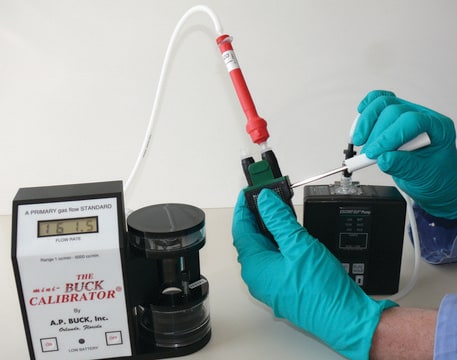50386-U
Ascentis® Express 90Å C8 (5 μm) HPLC Columns
L × I.D. 3 cm × 4.6 mm, HPLC Column
About This Item
Produits recommandés
product name
Ascentis® Express C8, 5 μm HPLC Column, 5 μm particle size, L × I.D. 3 cm × 4.6 mm
Matériaux
stainless steel column
Niveau de qualité
Agence
suitable for USP L7
Gamme de produits
Ascentis®
Caractéristiques
endcapped
Fabricant/nom de marque
Ascentis®
Conditionnement
1 ea of
Paramètres
60 °C temp. range
600 bar max. pressure (9000 psi)
Technique(s)
HPLC: suitable
LC/MS: suitable
L × D.I.
3 cm × 4.6 mm
Superficie
90 m2/g
Impuretés
<5 ppm metals
Matrice
Fused-Core particle platform
superficially porous particle
Groupe de la matrice active
C8 (octyl) phase
Taille des particules
5 μm
Dimension de pores
90 Å pore size
pH de fonctionnement
2-9
Application(s)
food and beverages
Technique de séparation
reversed phase
Vous recherchez des produits similaires ? Visite Guide de comparaison des produits
Description générale
Informations légales
Nécessaire, mais non fourni
Produit(s) apparenté(s)
Code de la classe de stockage
11 - Combustible Solids
Classe de danger pour l'eau (WGK)
WGK 3
Point d'éclair (°F)
Not applicable
Point d'éclair (°C)
Not applicable
Choose from one of the most recent versions:
Certificats d'analyse (COA)
Don't see the Right Version?
If you require a particular version, you can look up a specific certificate by the Lot or Batch number.
Déjà en possession de ce produit ?
Retrouvez la documentation relative aux produits que vous avez récemment achetés dans la Bibliothèque de documents.
Articles
When a C18 doesn′t give the desired separation, or your sample contains compounds that are known to be difficult to retain or resolve on a C18, consider changing to an Ascentis® Express C8 column.
Notre équipe de scientifiques dispose d'une expérience dans tous les secteurs de la recherche, notamment en sciences de la vie, science des matériaux, synthèse chimique, chromatographie, analyse et dans de nombreux autres domaines..
Contacter notre Service technique







